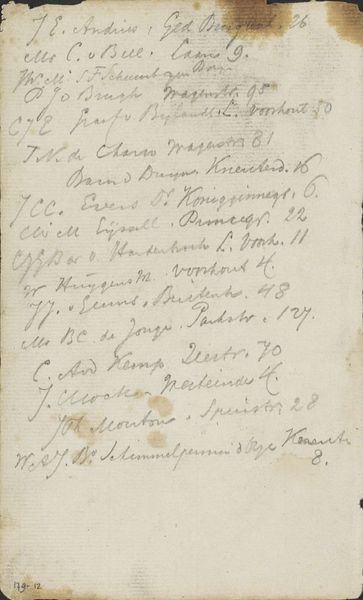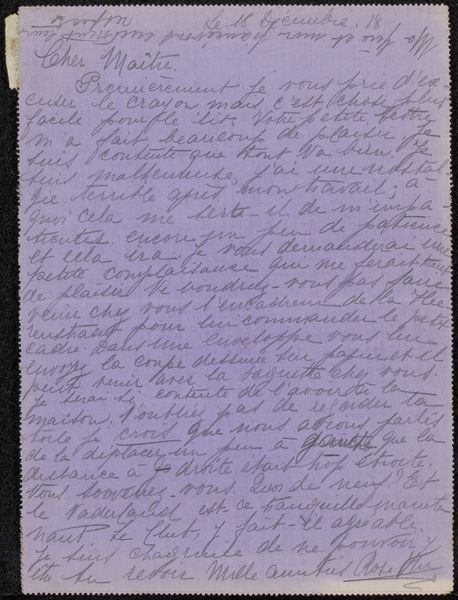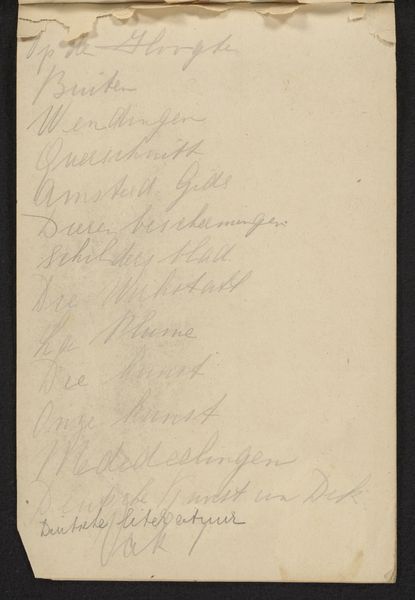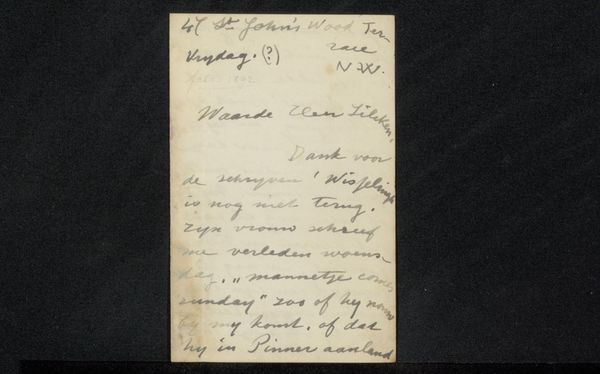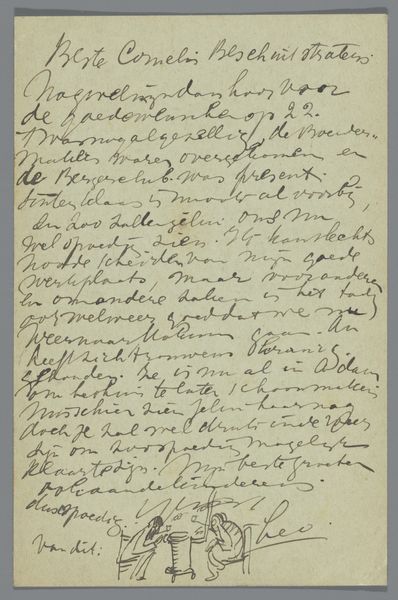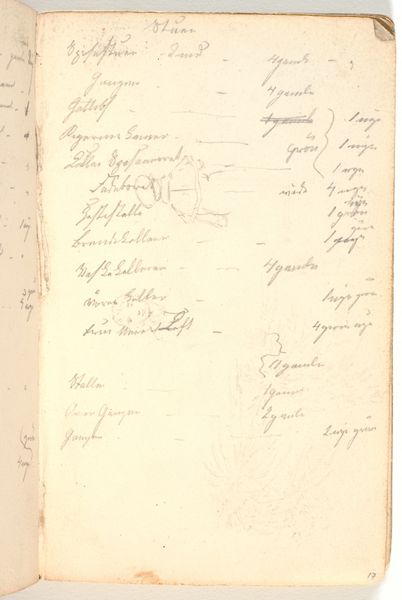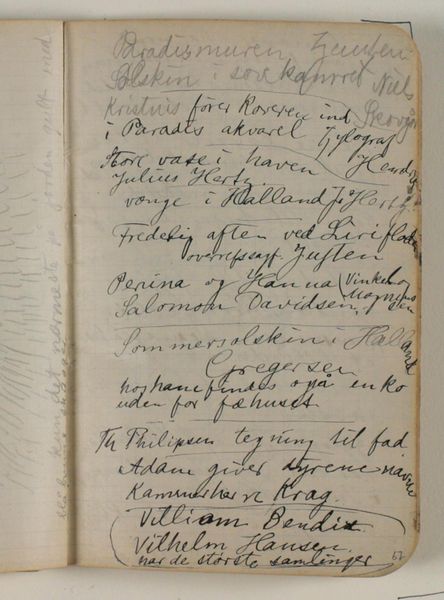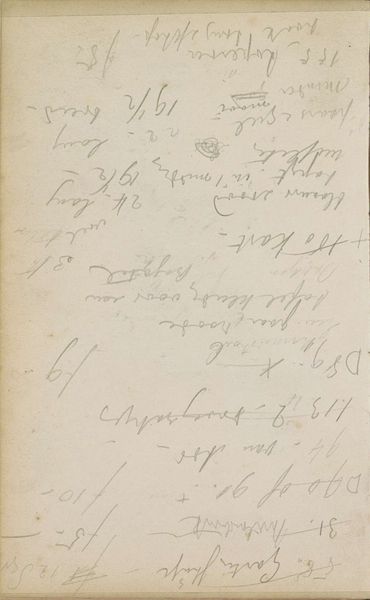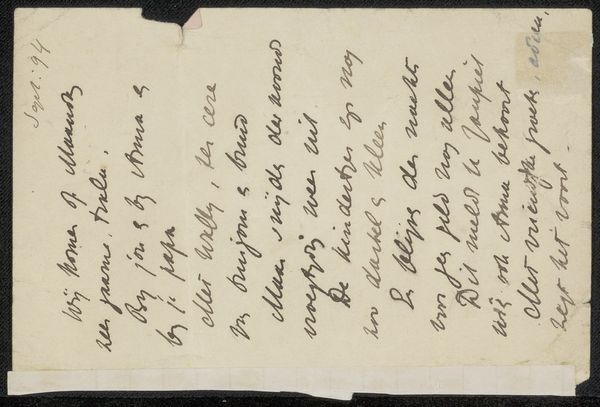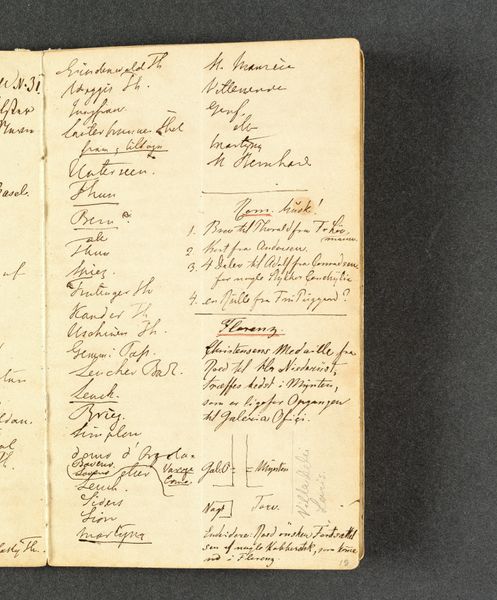
Schets van putti met symbolen met betrekking tot de VOC 1752 - 1819
0:00
0:00
jurriaanandriessen
Rijksmuseum
Dimensions: height 149 mm, width 50 mm
Copyright: Rijks Museum: Open Domain
Curator: This drawing, titled "Schets van putti met symbolen met betrekking tot de VOC" by Jurriaan Andriessen, likely created between 1752 and 1819, is really fascinating in its use of simple materials. The pencil and ink on paper feel almost like a glimpse into a private moment. It's striking how utilitarian it feels, almost a list rather than high art. What stands out to you initially? Editor: I notice all of the Dutch handwriting all over the paper. At first I thought this might be some type of landscape art piece, because it looks faded with the aged paper and ink medium. How do you see it fitting into art historical contexts, given its rough, unfinished appearance? Curator: I'm most drawn to what the handwriting implies in regard to production. Instead of aesthetic concerns, I want to highlight the labor and conditions that contributed to its making, and it is difficult not to point out the possible inventory/list. The medium indicates that this could possibly be for the VOC; however, how does its function complicate our understanding of art versus craft during the Dutch Golden Age? Editor: That’s interesting – to consider the economic system that might be propping up all art at the time. What about the 'narrative art' that the tags refer to? Does the function influence how we understand the narrative? Curator: Precisely. How labor practices in the VOC shaped the social narrative is a crucial element. We need to move beyond seeing pretty "putti" or traditional themes. Instead, the value is found by investigating the means through which resources shaped Andriessen’s production in this drawing. Editor: I see. So it’s less about the surface-level depiction and more about the underlying economic and labor structures that gave rise to its creation? Curator: Exactly! By looking at the materiality and considering its relationship to the VOC, we get a much more compelling narrative about Dutch society at the time. Editor: I hadn't considered that perspective. I’ll definitely look closer at materiality and the production of art now. Curator: And I’m glad you asked—helps me re-evaluate how I look at things, too.
Comments
No comments
Be the first to comment and join the conversation on the ultimate creative platform.
